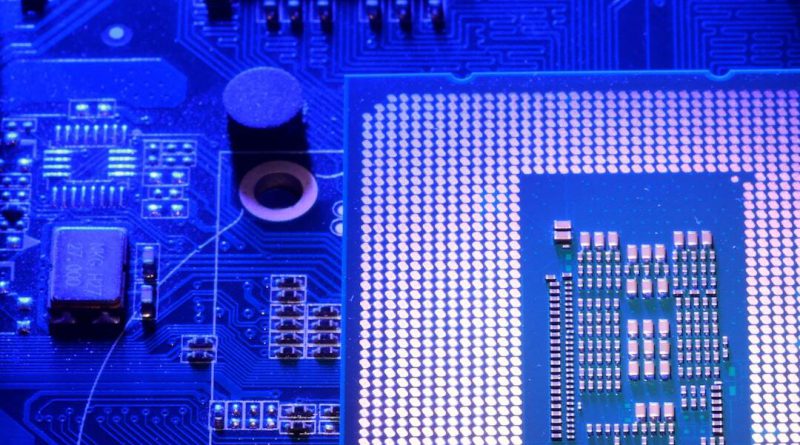Trump mulls tariffs on foreign electronics based on number of chips, sources say
“Trump’s plan aims to bring semiconductor and electronics manufacturing back to the U.S., boosting innovation, jobs, and national tech leadership.”
The Trump administration is exploring a forward-looking initiative to encourage more semiconductor and electronics manufacturing in the United States, a move designed to strengthen national security, create high-skilled jobs, and reinforce America’s role as a global technology leader. According to sources familiar with the matter, the proposed plan would tie tariffs on imported electronics to the number of semiconductor chips contained in each product, creating a clear incentive for companies to expand production domestically.
Under the proposal, the Commerce Department would implement a system where tariffs reflect the chip content of each product. By doing so, the administration aims to reduce U.S. reliance on foreign imports for semiconductors, which are considered vital for economic and national security. Officials emphasized that securing a domestic supply chain is critical to maintaining technological leadership in industries ranging from consumer electronics to enterprise computing.
“This initiative represents a multi-faceted approach to reshoring critical manufacturing to the United States. It combines strategic tariffs, tax incentives, deregulation, and energy support to ensure that America remains competitive and innovative on the global stage,” a White House spokesperson said.
The plan is expected to provide significant opportunities for U.S. companies and workers alike. High-tech manufacturing jobs could increase across the semiconductor and electronics sectors, while companies already investing in U.S. facilities may qualify for exemptions or special incentives, further strengthening domestic production capabilities. Leading global chipmakers, including those already operating in the U.S., are likely to benefit from measures designed to encourage deeper investment in American manufacturing.
Preliminary details suggest a 25% tariff on chip-intensive electronics from certain foreign markets, with lower rates for selected regions and exemptions for companies that commit to substantial U.S.-based production. This approach is intended to balance the goals of global trade with domestic economic development, allowing American consumers to continue accessing innovative products while supporting long-term industrial growth.
Industry analysts highlight that such policies can provide multiple benefits. By securing supply chains for semiconductors and other critical technologies, the initiative could prevent potential disruptions in essential industries. Furthermore, fostering domestic innovation through increased investment in high-tech manufacturing may help the U.S. maintain its competitive edge in emerging technologies, including artificial intelligence, 5G networks, and next-generation computing.
The proposed plan complements other measures already undertaken by the administration to bolster domestic manufacturing across key sectors. Tariffs, tax incentives, and streamlined regulatory policies are part of a broader strategy that includes pharmaceuticals, heavy machinery, consumer electronics, and advanced materials. These efforts aim to create a robust domestic industrial base that supports economic growth, innovation, and national security simultaneously.
U.S. companies with plans to expand their operations domestically, including semiconductor manufacturers and electronics firms, are already exploring opportunities to qualify for tariff exemptions and government incentives. By aligning corporate investment strategies with national priorities, the administration seeks to encourage long-term development in the U.S., providing stability for workers and investors alike.
Economic experts suggest that such initiatives could have a transformative effect on American industry. While tariffs may initially adjust import costs, the long-term benefits are expected to include increased domestic production, job creation, and stronger supply chains for critical technologies. Companies investing in U.S. manufacturing could also access innovation networks, government-backed support programs, and preferential trade arrangements.
Overall, the administration’s plan represents a proactive effort to strengthen America’s technological infrastructure, safeguard national security, and enhance global competitiveness. By incentivizing companies to bring semiconductor and electronics production to U.S. soil, the initiative aims to create a high-tech ecosystem that supports innovation, workforce development, and sustainable economic growth. As discussions continue, industry leaders, policymakers, and international partners are watching closely, recognizing that this multi-layered approach could redefine the future of American manufacturing and position the U.S. as a leader in global technological advancement for decades to come.



